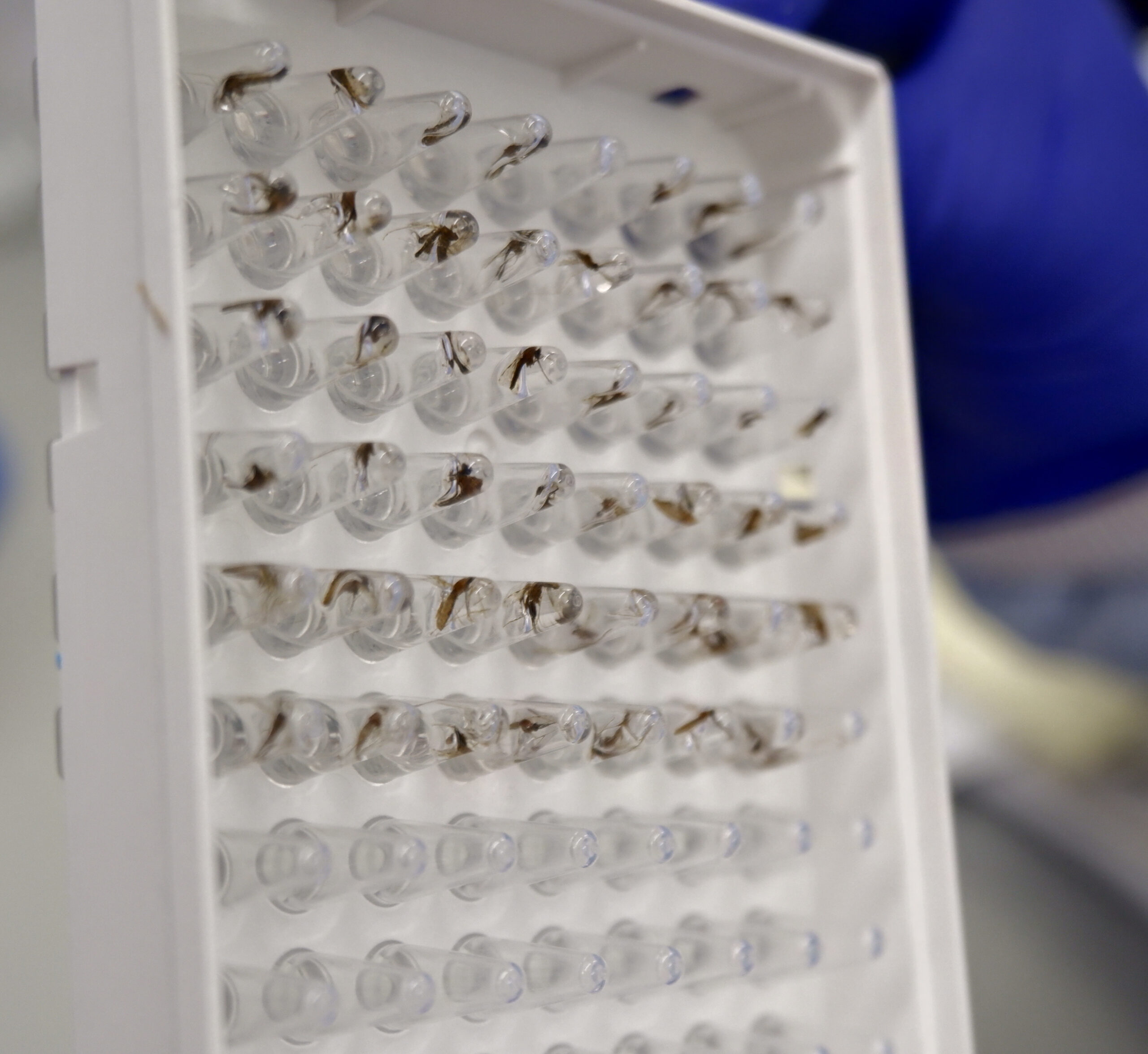
Mosquito samples suspended in ethanol in a plate. Photo: Jon Farrow, Wellcome Sanger Institute
Anopheles gambiae, one of the major malaria vectors in Africa, has a genome that is more than 275 million bases long. But if all you want to know is if your insecticides will work, you may only care about a few thousand bases. And with amplicon sequencing, you can target just the regions you’re interested in.
This sounds great in theory, but in practice, much rests on the choice of primers for your amplicon panel. A lot can go wrong with primers: they can create primer dimers by binding to each other instead of to the target, they can not bind at all, they can be active at the wrong temperature, or one of a dozen other parameters may be miscalibrated.
But one of the worst ways primers can fail is if, paradoxically, they work well, but only for certain samples. Your results will be biased, and spotting that bias can be nearly impossible.
“What can happen, is if there are any mutations at primer binding sites, it can mean that the primers don’t bind properly” says Sanjay Nagi, whose software package called AgamPrimer helps validate primers and probes for mutations before they even reach the lab. “You may, for example, get preferential amplification of certain alleles. And the primers might work for certain strains or populations, but not for others.”
AgamPrimer is a simple interface that connects two tools: the MalariaGEN_data python package and a primer design tool called Primer3. After asking you to fill out some basic parameters about the primers you need, the tool will search through thousands of whole genome sequences in the Anopheles gambiae genomic surveillance project database. It’s looking to see if there are mutations in the population that may affect your chosen primers, and it will flag those to you.
At the moment, Sanjay has built the tool to support the three species of mosquito that were included in the third phase of the Ag1000G project: Anopheles gambiae, Anopheles coluzzi, and Anopheles arabiensis. But with more sequences coming in from other species like Anopheles funestus, it’s likely that the next version of the tool will support a broader range of African malaria vectors. With that broadening will come a name change, to AnoPrimer.
“While the primer design process is not usually a very time consuming process in general, using AgamPrimer is worth it,” says Sanjay. “ It will make your molecular assays much more robust and you’re much less likely to have problems with amplification.”
If you’re interested in getting started with AgamPrimer, see this module on GitHub, complete with videos and code exercises. It was developed as part of the PAMCA-MalariaGEN Anopheles genomics training course. The source code is also available on Github, and a manuscript describing the tool was published recently on BioRxiv.
(W6 M4) Vector Genomic Analysis Training: Workshop 6 Module 4 (English)

